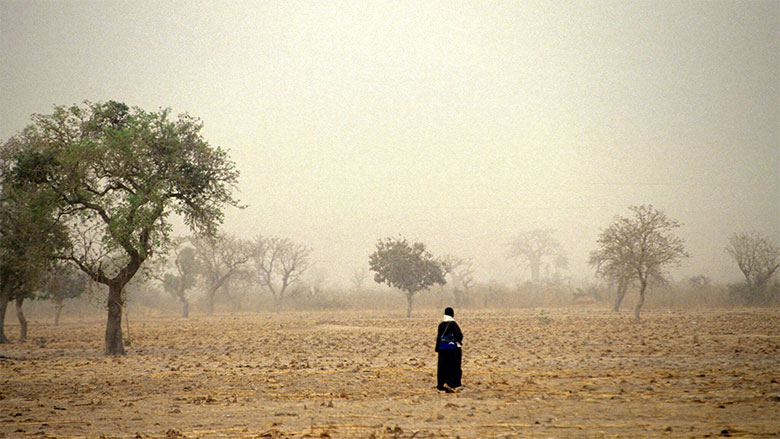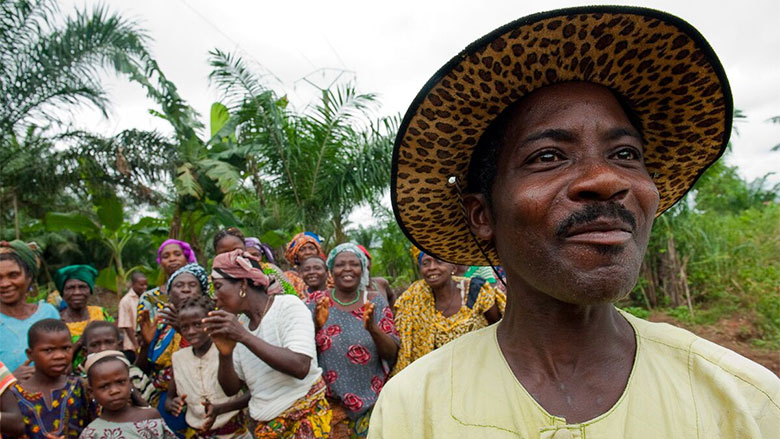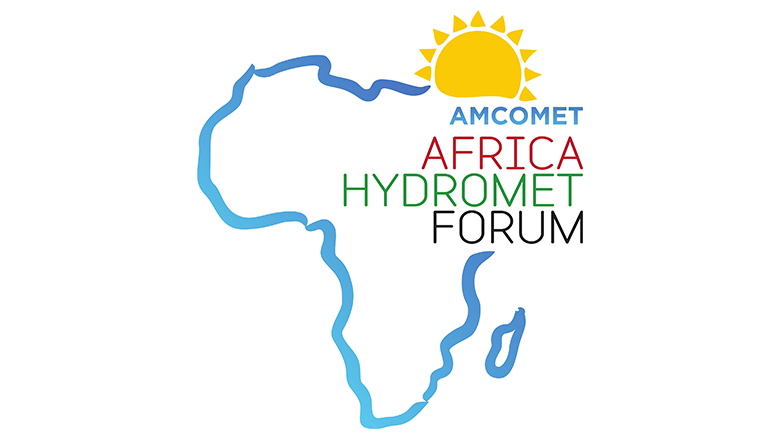What is hydromet? Hydrology + Meteorology; the field of weather, water, and climate phenomena.
The Africa Hydromet Program is a partnership of development organizations working to improve weather, water, and climate services throughout Africa. Investing in people and local economies through the modernization of these services—also known as hydromet services—is crucial to ensuring that countries, communities, and regions build climate and disaster resilience.
Since the program was launched in June 2015, The World Bank Group, The Global Facility for Disaster Reduction and Recovery, and other partners have been working together to modernize hydromet services in 15 African countries and four regional climate centers during its first phase. The program holistically addresses modernization needs at the national, sub-regional, and regional levels. This includes transforming observation infrastructure, collecting and interpreting data, and delivering climate services—including high quality weather forecasting—to offer timely and reliable weather and climate forecasts and guidance on impending disaster risks.
Effective and reliable hydromet services help people safely evacuate risky areas before a disaster hits. These services help government agencies effectively plan for climate adaptation, they help farmers increase crop yields, and help grow various economic sectors that are impacted by weather, hydrology, and the effects of climate change.

“Statistics show that 90% of all disasters on the continent are weather and climate-driven.” – Centre for Research on the Epidemiology of Disaster’s Emergency Events Database

The African continent has made significant development advancements in the last few decades. Annual growth has skyrocketed in the last two decades, but weather, water, and climate-related disasters threaten to derail these accomplishments. Although Africa accounts for less than 4% of global gas emissions, the continent is most vulnerable to the adverse impacts of climate change. Since 1970, Africa has experienced more than 2,000 natural disasters, nearly half taking place in the last decade. During this time, natural disasters have affected over 460 million people and resulted in more than 880,000 deaths.
Less than 20% of Sub-Saharan African countries currently provide reliable weather, water, and climate services to their people and economies. African governments often juggle competing priorities for investment. Without adequate funding, National Meteorological and Hydrological Servicesprovide limited services needed to contribute to climate-resilient development and adaptation planning.

The Response
The World Bank, World Meteorological Organization, the African Development Bank, the United Nations Development Programme, Agence Française de Développment, and the World Food Programme came together in a framework partnership under the Africa Hydromet Program. This program is foremost a partnership to address the development challenge of building climate and disaster resilience in Africa.
Phase I of the program (2015 - 2023) envisages a total investment of approximately $600 million for the modernization of 15 countries’ hydrological and meteorological services and systems. Phase I also includes the modernization of four regional climate centers for the strengthening of early warning and response systems that fortify African countries and build resilience against disaster risks and the effects of climate change.
The Africa Hydromet Program also supports African countries in their efforts to provide hydromet services for cities and rural communities. Through the program, stakeholders such as governments, including academics and civil society groups, collaborate to provide information services for people, communities, and businesses to support long-term sustainable development efforts.
The program will holistically address modernization needs at the national, sub-regional, and regional levels, and will equally support the following:

The current global portfolio of World Bank hydromet projects, both active and in the pipeline, is about $900 million. For Africa, $312 million is being dedicated to transform hydro-meteorological services via various projects throughout the continent.
Since 2016, the Africa Hydromet Program has been active in providing investment support and technical assistance to several countries in Africa, with the coordinated action of development partners.
The World Bank is responding to requests and supporting on-going work in Burkina Faso, the Democratic Republic of the Congo, Ethiopia, Mali, Senegal, Togo, and Zambia. Support is being offered to Djibouti, Ghana, Guinea-Bissau, Cameroon, Lesotho, Malawi, Mauritius, Sierra Leone, Somalia, Tanzania, Tunisia, Uganda, and Zimbabwe.
The World Bank is committed to supporting the transformation of and continues to invest in hydromet services and systems. This support includes the following:
In addition to these projects, regional climate centers and sub-regional centers in countries, including Mali, DRC, and Niger, are also receiving support from the program’s partners such as the French Development Agency (AFD), the African Development Bank (AfDB), the United Nations Development Programme (UNDP), and the World Meteorological Organization (WMO).
To meet the urgent need for transforming and enhancing hydromet services, the World Bank Group, the World Meteorological Organization (WMO), the African Development Bank (AfDB), the AFD (French Development Agency), and the United Nations Development Programme (UNDP) have joined forces to implement a program that strives to modernize hydromet services at national, sub-regional, and regional levels in Africa. The European Union, the multilateral Climate Risk Early Warning System (CREWS) initiative, and the Government of Japan strongly support the Africa Hydromet Program. The Green Climate Fund (GCF) has also provided critical support to meet the goals of the program.
The Africa Hydromet Program has been supporting the following countries:
Burkina Faso
The Strengthening Climate Resilience in Burkina Faso project works to improve the country’s hydro-meteorological, climate and early warning services, and deliver social protection services. By building human and institutional capacity, improving infrastructure and access to key climate, weather and water services for sectors and communities, the project works to boost human development and gender, private sector development, urban and rural development, environmental and natural resource management, and resilience for the people of Burkina Faso.
Chad
Combatting droughts, floods, and other severe disasters, the Chad Hydromet and Early Warning Services project works to enhance the capacity of the government to respond to extreme climate and weather challenges. The project supports national agencies to deliver critical services relevant to meteorology and climate, hydrology, civil protection, and food security. Through this, the Africa Hydromet Program works to foster swifter support in some of the most dire situations, to people of Chad.
Dedicating more than $16 million to resilient development through hydromet services in Côte d'Ivoire, the Urban Resilience and Solid Waste Management Project serves to reduce exposure and vulnerability to flooding in urban areas. The project also works to improve solid waste management for people and households in targeted municipalities. This six-year project specifically helps to mitigate flooding and recurrent disasters in urban areas via improving public infrastructure, raising awareness in vulnerable neighborhoods, transforming early warning systems and hydromet service delivery.
The Democratic Republic of the Congo
Working to improve early warning systems, resources have been dedicated through the Strengthening Hydro-Meteorological and Climate Services Project. The project works to boost institutional capacity, transform and modernize equipment, facilities, and infrastructure for observation and forecasting, and improve hydromet information service delivery for mitigation and recovery. Through this project, about 20 meteorological and six hydrological stations are being rehabilitated to improve monitoring networks throughout the DRC.
Ghana
In the Odaw River Basin area of the greater Accra region of Ghana, the Africa Hydromet Program directly serves over 2.5 million people through flood management services. Through the Greater Accra Resilient and Integrated Development (GARID) Project, urban flood infrastructure and solid waste management is being transformed and enhanced. Additionally, the project is improving the country’s flood warning and response system, protecting the country’s 30 million people from extreme weather, water and climate catastrophes.
Kenya
As one of East Africa’s largest hydromet projects, the Kenya Climate Smart Agriculture Project serves people and communities by dedicating $15 million to increase agricultural productivity and build resilience against climate risks. The project scales up climate-smart agricultural practices for climate adaptation, co-benefits and mitigation, working with smallholder farmers and farming communities to provide immediate and effective response in the event of a crisis. Boosting results-oriented agriculture research, the project also finances the development and dissemination of agro-weather forecasting and marketing information systems for effective development.
Mali
Through the Strengthening Climate Resilience in Mali Project, the Africa Hydromet Program works to improve the country’s provision of, and access to hydro-meteorological, early warning, and response systems services. The project will benefit highly vulnerable groups, particularly over 80 percent of the country’s population, whose livelihoods are predominantly dependent on rain-fed agriculture.
Mozambique
Multiple hydromet projects have been operating in Mozambique to support the country’s hydromet development and resilience efforts. The Africa Hydromet Program has supported two successful projects in the country, contributing to economic development. One project supported the preparation and implementation of the Enhancing Spatial Data for Flood Risk Management Project, along with GFDRR and partners. This project closed in 2017.
The Climate Resilience: Transforming Hydro-Meteorological Services project, also supported by GFDRR, delivered hydrological and meteorological information services to communities and businesses at risk. The Pilot Program for Climate Resilience, from the Climate Investment Funds (CIF), financed this $15 million project. The results include the provision of early warning systems and flood forecasting for the Zambezi, Limpopo and Incomati River basins, hydro-meteorological information for farmers in pilot locations in the Gaza and Inhambane provinces, weather service alerts in coastal areas in Inhambane, and innovations for inter-agency delivery of data. This project closed in 2019.
Niger
Protecting lives, communities, and property in Niger, the Africa Hydromet Program works to improve the country's resilience against natural hazards through effective and immediate disaster risk management interventions throughout the country. The Disaster Risk Management and Urban Development Project dedicates $11 million to bolster Niger’s flood risk management, strengthen government capacity to forecast and respond to disasters and emergencies, and hence, support the country’s over 23 million people before, during, and after climate disaster situations.
Nigeria
Serving a southern state in Africa’s most populous country, the Africa Hydromet Program, through the Ibadan Urban Flood Management Project, works to improve the capacity of Oyo State to effectively manage flood risks in the city of Ibadan.
In Northern Nigeria, the Transforming Irrigation Management in Nigeria Project works to improve irrigation and drainage services for agriculture and water service delivery for people in arid regions. Additionally, the project rehabilitates public irrigation infrastructure, including dams and reservoirs, and boosts water access to communities with limited resources.
Rwanda
In Northwest Rwanda, deforestation and unsustainable practices have resulted in increased flood risks, soil erosion, and agricultural losses. The Landscape Approach to Forest Restoration and Conservation Project works to enhance landscape management and improve environmental services and climate resilience through Green Climate Fund financing, with additional funds from GFDRR.
The project is financing the installation of new hydromet monitoring equipment, is in the process of finalizing a flood forecasting and early warning system for the Sebeya river basin and is supporting the development of a national early warning platform. Additionally, the project is boosting the efforts of Rwanda’s meteorological agency to foster the delivery of real-time climate observation and transforming weather radar and automatic weather stations.
Sierra Leone
The 2017 landslides in Freetown devastated lives and communities and caused millions of dollars in damages. The Africa Hydromet Program, through the Freetown Emergency Recovery Project responded to support recovery for Sierra Leone by strengthening government capacity to respond to disasters and climate risks, and rehabilitating and rebuilding critical infrastructure. The project boosts resilience by reinforcing urban roads, boosting water supply, sanitation and waste management, and supporting the people’s efforts to mitigate risks throughout the capital city.
With the goal of addressing climate resilience, the Africa Hydromet Program works via the Integrated and Resilient Urban Mobility Project, which boosts institutional capacity to transform the transport sector. The project Maximizes Finance for Development (MFD) by supporting informal private operators and financing the enhancement of public transport services, so that Sierra Leoneans can have greater access to health, education, commerce, and other socio-economic services through improved hydromet service delivery.
Tanzania
In Tanzania, the hydro-focused Second Tanzania Water Sector Support Project bolsters water resource planning and improves access to water and sanitation in Dar es Salaam. Devoting US $15 million to investments in improved hydromet information services, wastewater and sewerage treatment, as well as off-grid sanitation, the project serves major and under-served communities in the country.
Togo
Strengthening the capacity of institutions to manage risks from flooding and land degradation in rural and urban areas, the Africa Hydromet Program is present in Togo through the Integrated Disaster and Land Management Project, and also through the CREWS Togo Hydromet and Early Warning Services project.
Regional Projects
With support from the CREWS initiative, West Africa is being supported via the development of seamless operational forecasting systems. Additionally, technical assistance for capacity is being delivered to the AGRHYMET Regional Center countries: Burkina Faso, Cabo Verde, Chad, Gambia, Guinea Bissau, Mali, Mauritania, Niger and Senegal.
Additionally, regional projects operating in the region includes the West Africa Food System Resilience Program (FSRP), operating in Chad, Mali, Niger, Sierra Leone, Togo to boost food security and resilience for the socio-economic development of people in each country, where hydromet services play a critical role in supporting agriculture and food security throughout the region.

The inaugural Africa Hydromet Forum took place in September 2017, at the headquarters of the African Union Commission in Addis Ababa, Ethiopia. Other sub-regional forums and workshops have taken place in central, east, west and southern Africa.
These forums unite high-level representatives, civil society, and experts to exchange strategic insights on improving hydrological, meteorological, and early-warning services to achieve climate and disaster resilience as part of Africa’s sustainable development strategy.
Watch: Africa Hydromet Forum 2017, Driving Resilient Development in Central Africa with Hydromet, Improving Hydromet Services in West Africa, African Leaders Unite to Modernize Hydro-Meteorological Services
The initiative is led by The World Bank, the Global Facility for Disaster Reduction and Recovery, the African Ministerial Conference on Meteorology, the World Meteorological Organization and the African Union Commission in partnership with the Federal Democratic Republic of Ethiopia, the African Development Bank, The United Nations Development Programme, Agence Française de Développement and the World Food Programme.
Goal
To build consensus and momentum for transforming weather, water, and climate information services for climate-resilient growth, adaptation planning, and sustainable development.
Objectives
The Africa Hydromet Forum:
Regional Forums
Hydromet forums, meetings and efforts have been implemented in each region of the continent, to streamline and optimize efforts to prevent, mitigate and tackle weather, water and climate challenges by fostering collaboration between countries. They include:
In addition to building resilience through hydromet service delivery, concurrent efforts to mitigate disasters and boost resilience in Africa are being undertaken via the “Building Disaster Resilience in Africa Results Area 2” and other Result Area programs.